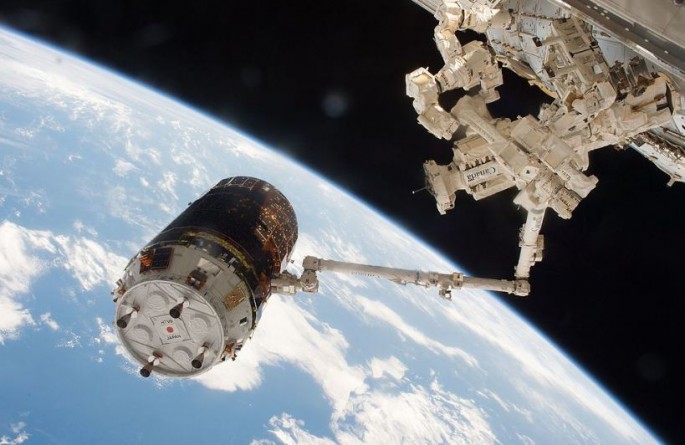Mankind's first attempt to use a "space junk collector" satellite -- Japan's Kounotori-6 spacecraft -- to remove dangerous debris from low Earth orbit has almost failed, but Japan has promised to try again until success is achieved.
The Japan Aerospace Exploration Agency or JAXA on Feb. 7 admitted efforts to deploy the "fishing net" component from Kountori-6 that will help de-orbit space junk have so far failed. JAXA, however, hasn't given up on successfully deploying this device and said it has until the end of this week to do so since Kounotori-6 will re-enter the atmosphere and be destroyed on Feb. 13.
Developed and built over the past 10 years, the "net" is a 700 meter-long electrodynamic tether consisting of thin wires of stainless steel and aluminum. When activated, these wires create a magnetic force as they swing through the Earth's magnetic field that's strong enough to slow down the space junk they come into close contact with, causing its orbit to decay.
When the speed of the orbiting space debris decays sufficiently enough, the Earth's gravity pulls them into the atmosphere where they burn-up on re-entry.
"The length of the tether this time is 700 meters (2,300 feet), but eventually it's going to need to be 5,000 to 10,000 meters-long to slow down the targeted space junk," said engineer Katsuya Suzuki who works for Nitto Seimo, the company made the net.
JAXA said longer tethers will be sent to space in the coming years and plan to develop a better way of eliminating space junk by the mid-2020s.
Kounotori-6 or HTV-6 arrived at the International Space Station (ISS) on Dec. 13 and was ejected into space with a new payload of waste on Feb. 6. Japan's Kounotori satellites are unmanned cargo satellites that transport supplies to the ISS and self-destruct in the Earth's atmosphere along with the garbage and junk from the ISS.
Kounototi-6 is the key element of KITE (Kounotori Integrated Tether Experiment), an experimental electrodynamic tether (EDT).
The tether was equipped with a 20 kg end-mass, and would have been 700 m long when deployed. A maximum current of 10 mA was planned to run through the tether.
The EDT experiment was scheduled following Kounotori 6's departure from the ISS, with a planned duration of one week. After the experiment, the tether would have been separated before the spacecraft de-orbited. The main objective of this experiment was the orbital demonstration of extending an uncoated bare-tether, and driving electric currents through the EDT.
Over 100 million pieces of space junk orbit Earth, 29,000 of which are big enough to cause major damage.
Space debris consists of satellite parts; metal ejected from rockets and abandoned equipment, among others. This debris hurtles through the vacuum of space at thousands of kilometers per hour, fast enough to damage or destroy whatever they hit.



























